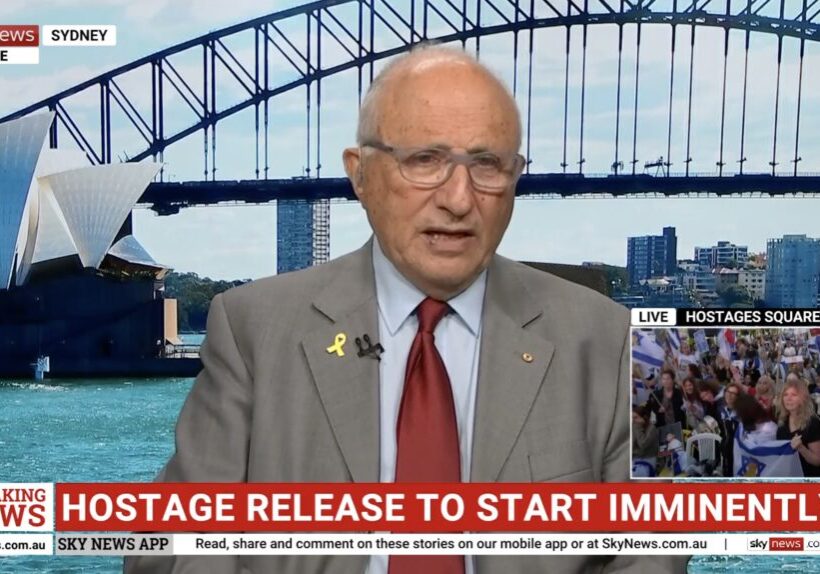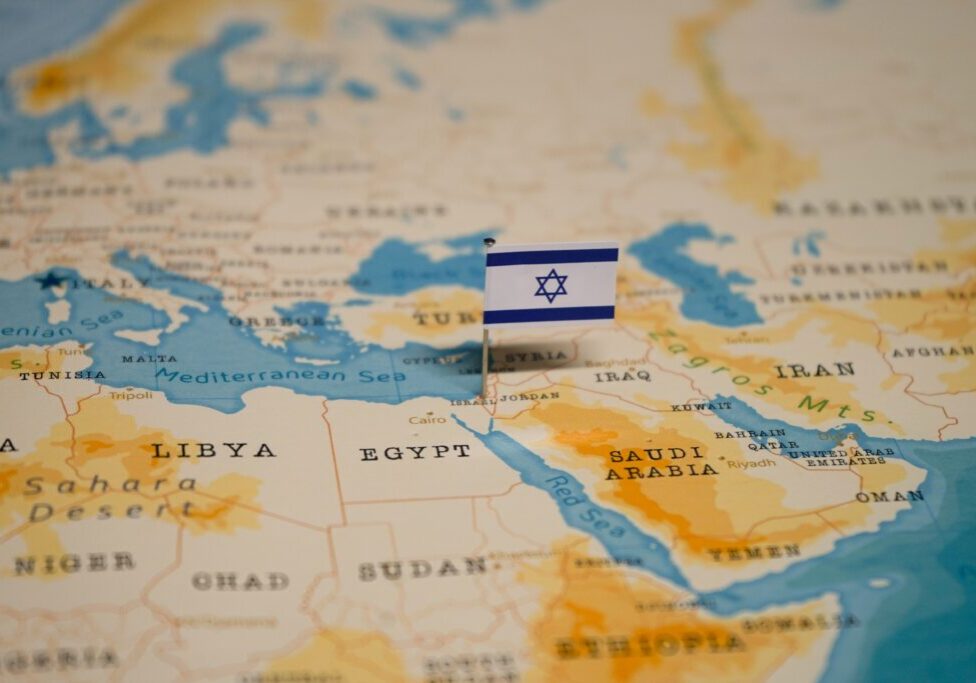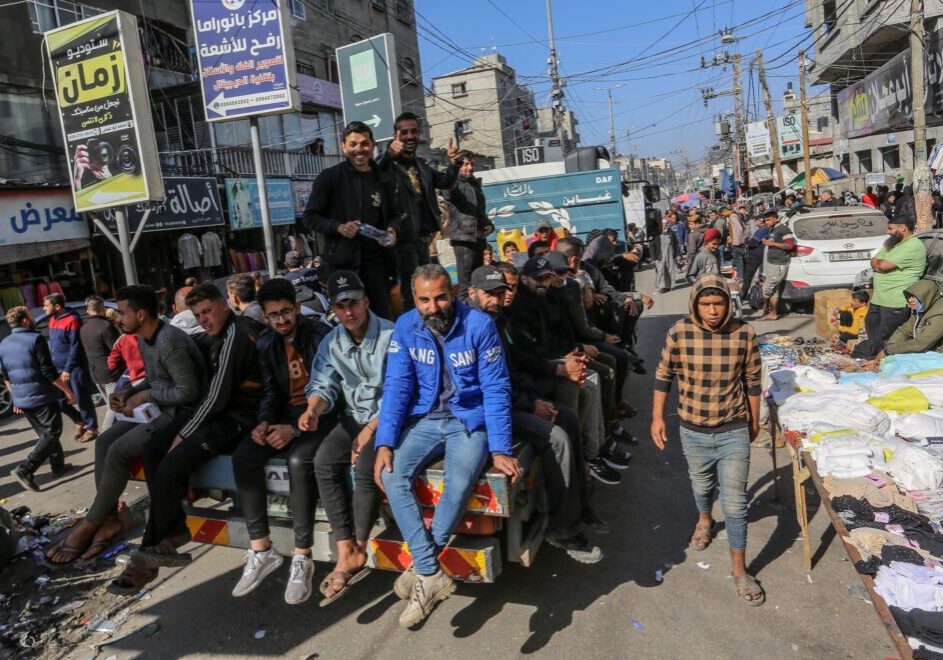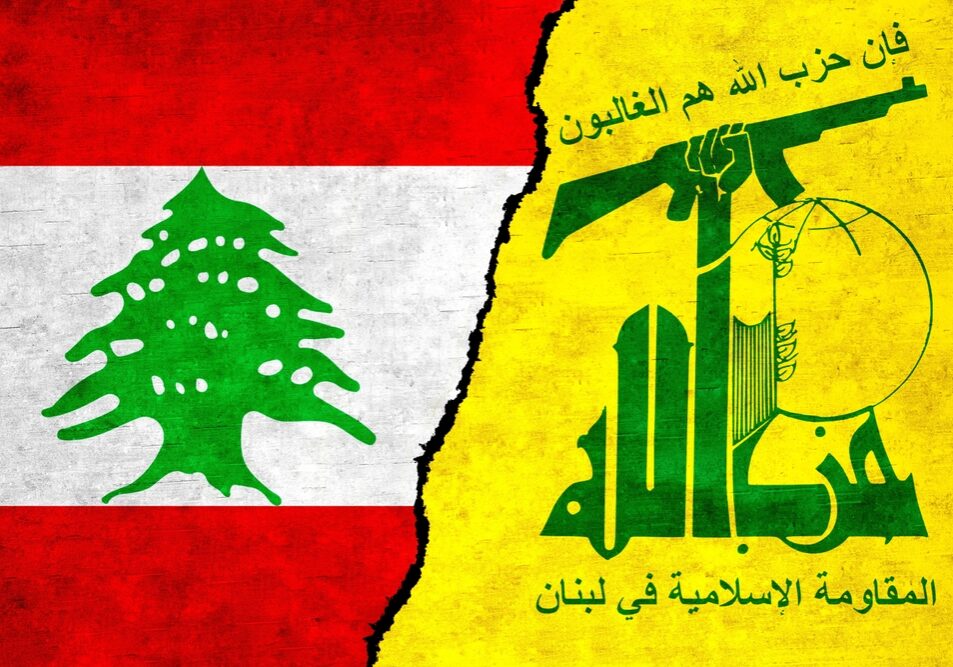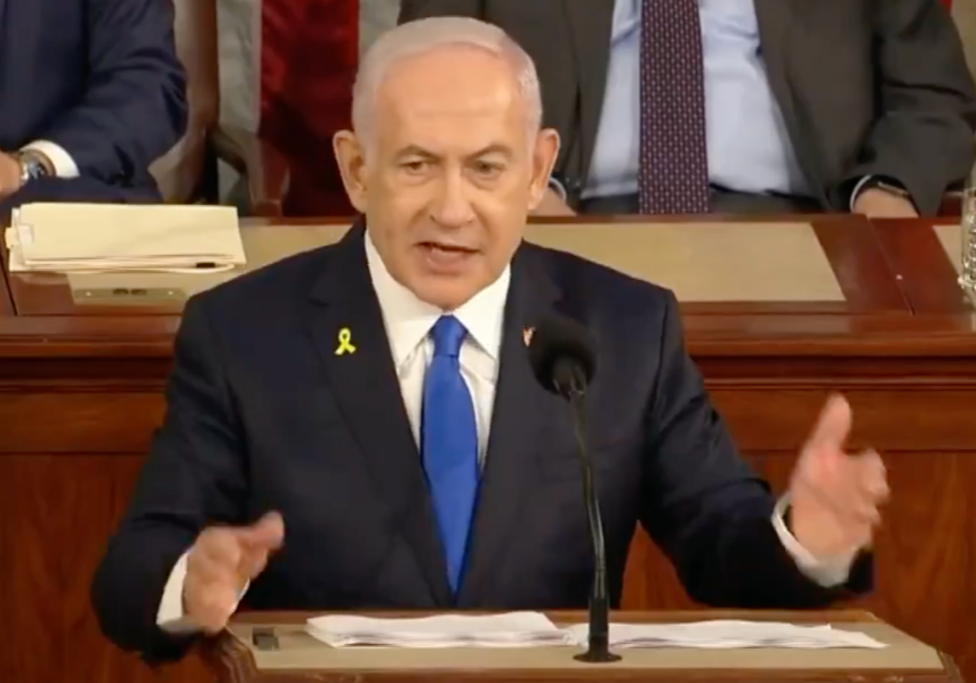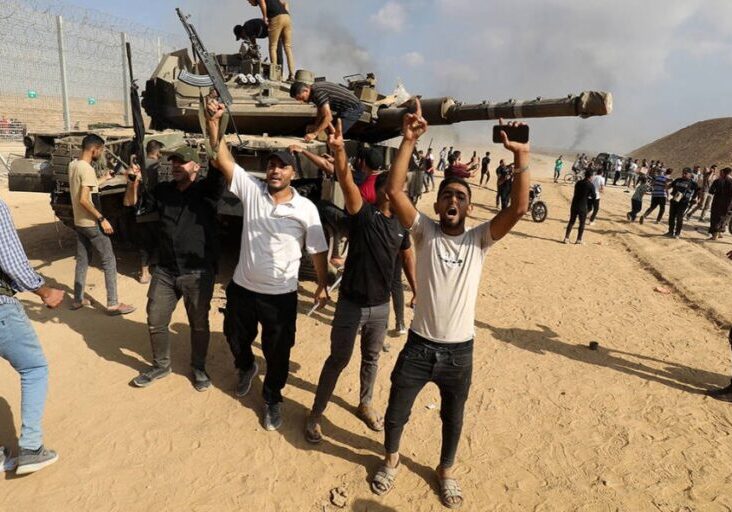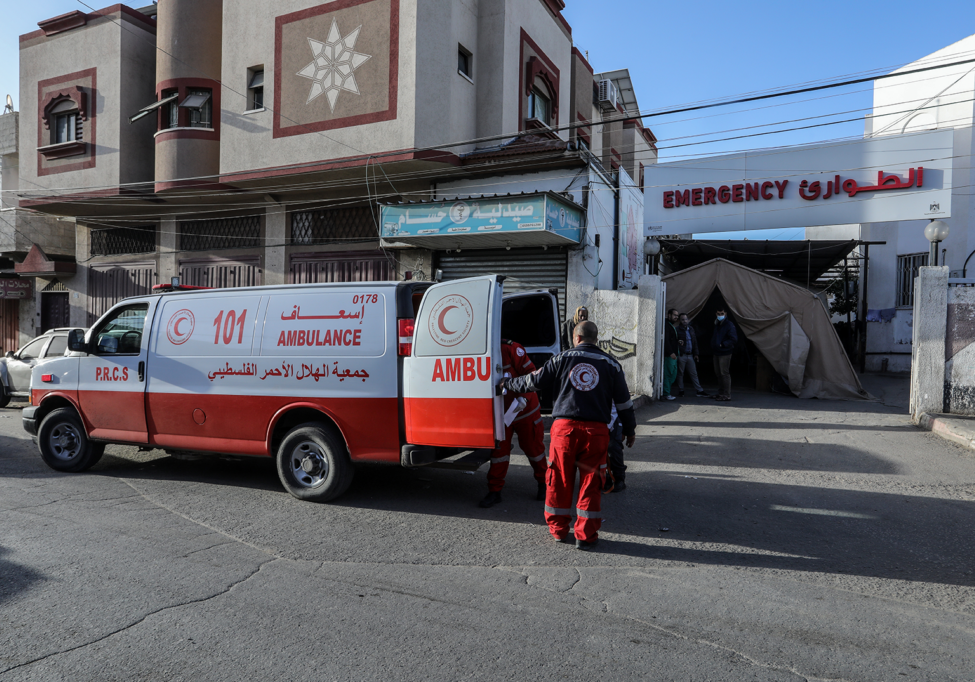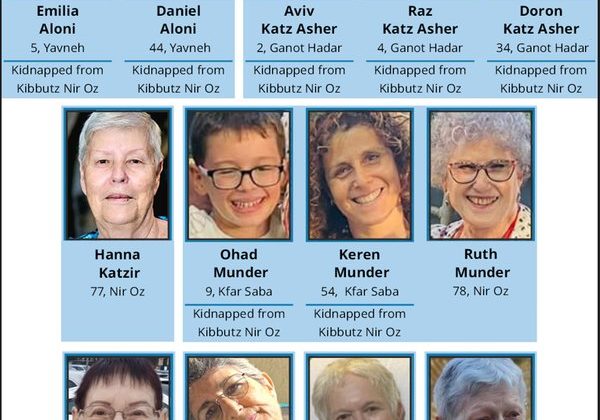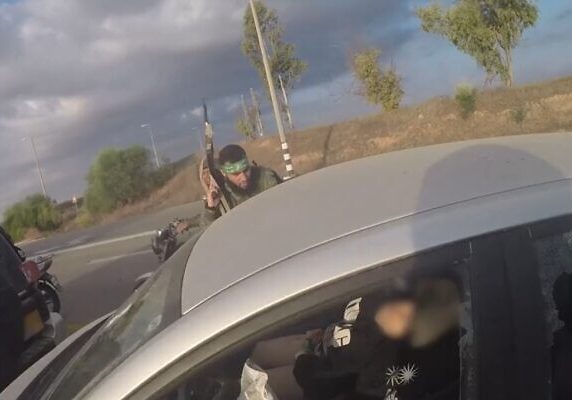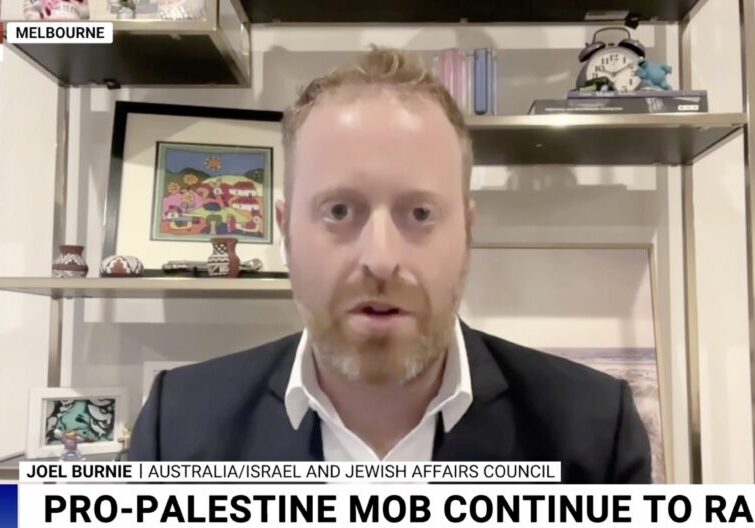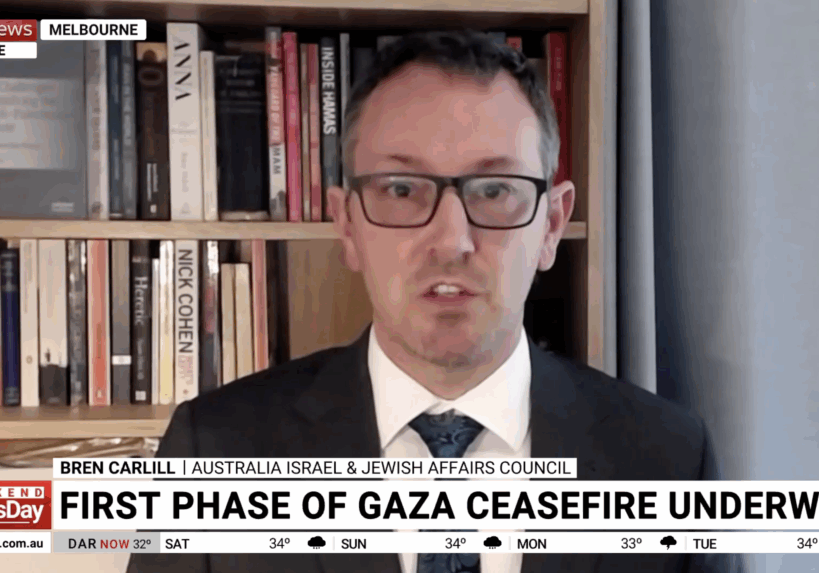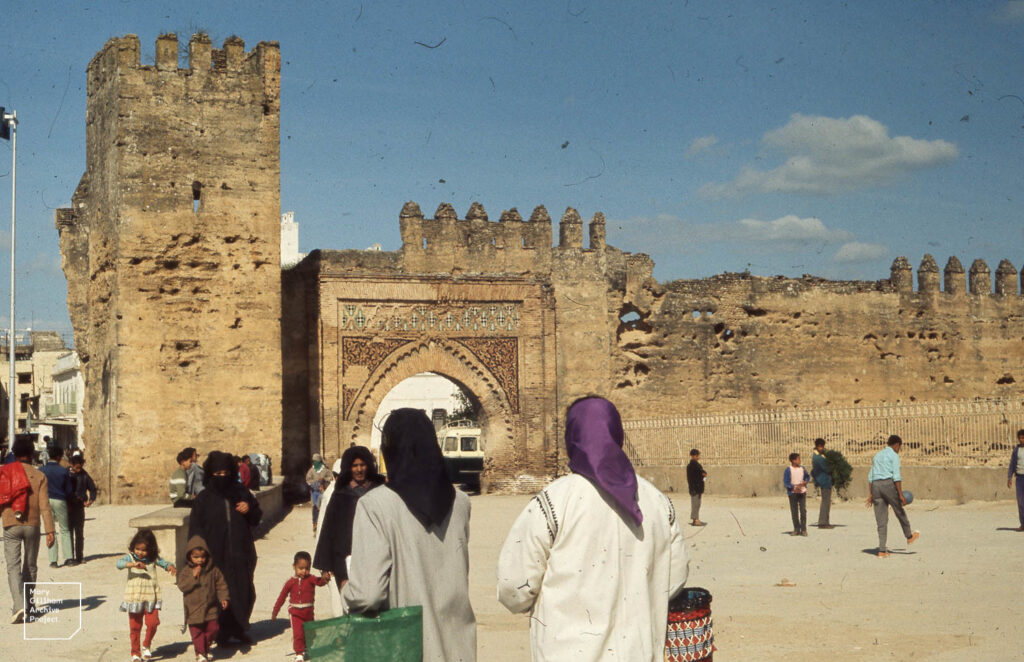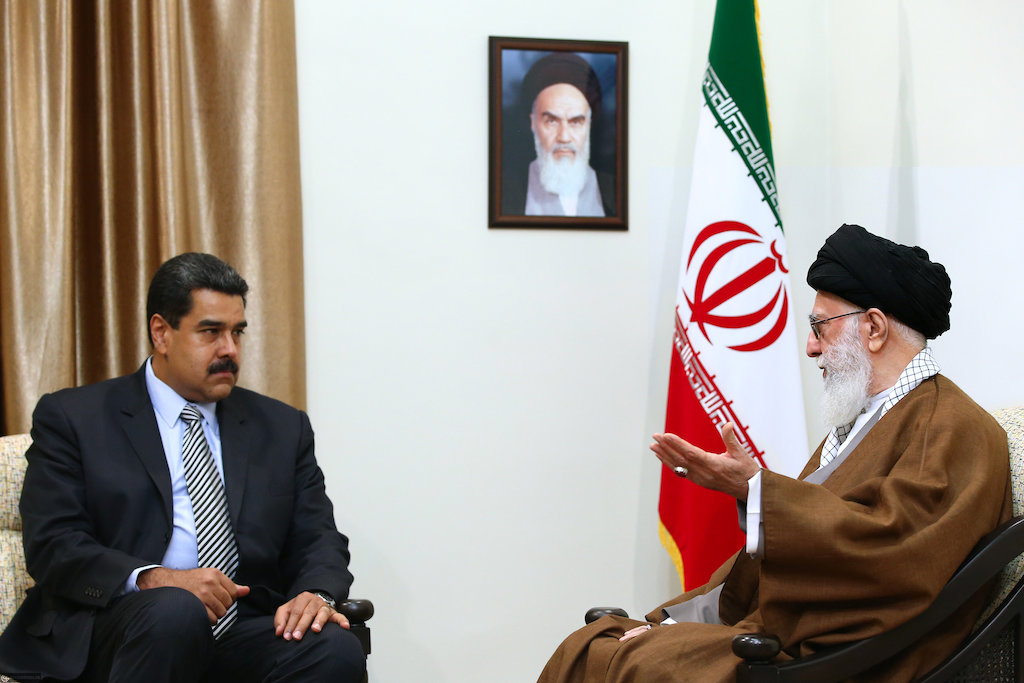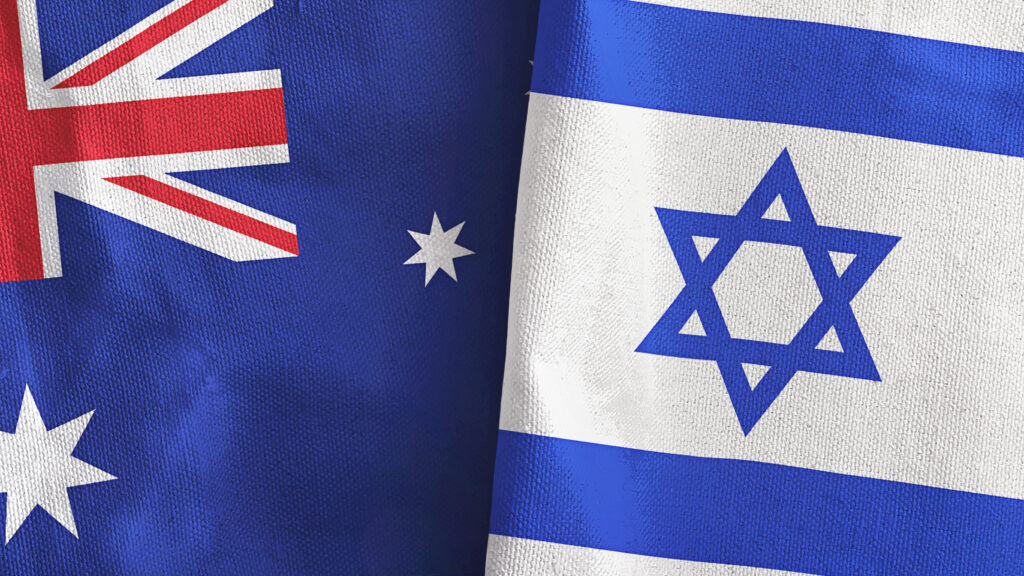FRESH AIR
War Update: Operation Rising Lion – Were the goals achieved?
June 25, 2025 | Ahron Shapiro

Today’s AIJAC Iran war update once again brings you rare and exclusive interviews, fresh analysis and commentary from Hebrew Israeli media.
Today’s update includes:
- Following yesterday’s ceasefire between Israel and Iran, veteran Middle East and military analysts Tzvi Yehezkeli and Yossi Yehoshua field questions from their i24 (Hebrew) colleague Miri Michaeli about whether Operation Rising Lion achieved its objectives.
- Meanwhile, in Yedioth Ahronoth, military and intelligence analyst Ronen Bergman cautions that post-bombing intelligence assessments take time, and therefore it is premature to conclusively determine how successful the Israeli Air Force’s strikes on Iran were in neutralising Iran’s nuclear and ballistic missile threat.
- Also in Yedioth Ahronoth: In an article written hours before seven IDF soldiers were killed in Gaza when a terrorist planted an explosive charge on their APC, Yoav Zitun reports that the IDF’s recent focus away from the southern front had apparently slowed progress there, and quotes an IDF source saying that Hamas had been becoming more bold in attacking on Israeli forces in recent weeks.
‘You could chase after the last launcher and it could take ten years. But that’s not the goal’
Tzvi Yehezkeli and Yossi Yehoshua
i24
June 25, 2025
Miri Michaeli: And following the ceasefire, I’m asking the question: was it the right time to stop? Tzvi Yehezkeli and Yossi Yehoshua. Yossi, let’s start with you.
Yossi Yehoshua: Look, in a utopian world we would have kept fighting, if we had all the resources, all the munitions, all the interceptors. But we’re not in that place—certainly not in a war that spans 2,000 kilometres. You’re asking me if there was more work left to do? Then it seems to me there was more—if I heard correctly and paid attention to what the senior IDF officials said, then two to three more days at most, and then we’d have findings and we would’ve wrapped it up. In other words, the IDF still had a few more targets.
By the way, as far as targets in Iran go, you can find them endlessly—you could chase after the last launcher and it could take ten years. But that’s not the goal.
And I think that overall, in the face of the pressure—which isn’t all clear and evident to the broader public, and I think the further we get from the event, we’ll be able to talk about the pressure that was here—I think in that regard we met the timelines, and the result is excellent.
Miri Michaeli: Yes, thank you Yossi. Tzvi, in the current situation it seems there really was no choice but to stop the fighting, especially after the US did its part and contributed to the destruction of the nuclear facilities. But where does that leave us with Iran?
Tzvi Yehezkeli: So look, the Iranians know what they took, and they know what happened. The fact that they’re now putting on victory parades doesn’t really bother me.
What could’ve been done more during the days of the assault was that, even as we struck, we could have targeted this regime—to show the whole world, especially the Arab world, that Israel did this. And I’m talking about eliminating Khamenei and wiping out all the leadership around him, mainly the religious leadership.
Now look, we’ll still find out in the coming weeks just what a blow the Iranians took. And they’ll find out too—they’ll discover what kind of arsenal they’re left with. And it’s possible that the old and in my opinion realistic dream of toppling the regime might still beckon. It’s not too late. People will rise and settle scores, and it is definitely a different Middle East after the assault.
But—but, and this must be said here—every jihadist movement, whether it’s Hamas or the Iranians, who are the father of Hamas and were responsible for most of the attacks that occurred here—they will come back, and they will do it again, and they’ll regroup. Now they’ll come and cry to the world, they’ll go into negotiations, they’ll have the sanctions lifted, they’ll get funding again, and their project will start to take shape again. That has to be taken into account.
We sort of mowed the grass, and the grass grows back. We gave the world a blow—but there are others. Had we delivered a symbolic strike, again, it would have looked better, but this is the maximum we could do. No doubt, if it were up to me, I would certainly recommend continuing, going a bit further, and delivering more of what Israel did in the past 24 hours in Tehran—strong blows, prison raids, etc.
But since this is the result, we must now maximise it.
How do we maximise it? First of all, by continuing—and perhaps aspiring to a model whereby if something exceptional happens, we step in again. Trump—who knows, with his inconsistency—maybe he has some regrets that he hit Fordow, and now he wants to play it balanced. I don’t know. It’ll probably stabilise in the coming days.
And most importantly—Gaza and the other arenas. Return as victors. That can be done. And I think the Middle East is waiting for the same power that finished in Iran to come and prove itself in the other arenas.
Miri Michaeli: Yes, I think it’s clear who won this war—and it’s us. But I want to show you images coming just in from Iran—victory celebrations in the main square of Tehran. Tzvi, they’re telling a completely different story to their public, aren’t they?
Tzvi Yehezkeli: Yes, of course. Fine. They said the same about Abdel Nasser during the Six Day War—that they had won. And the 1973 October War, Yom Kippur War, they describe in their Egyptian museums as a victory. And Hamas always wins, Miri. The Islamic terror groups always claim victory—as long as they exist.
When they no longer exist, there won’t be any “victory celebrations.” That’s the premise. We know this from Hamas and their parades. I’m not buying it. I’m not buying it. And neither are those in the crowd now gathered in the main square in Iran.
Yes, they should have destroyed the square—Revolution Square. Yes, they should have destroyed more of the regime’s symbols, so there would be nothing to celebrate.
I’m not impressed by this—because tomorrow, these citizens know they’ve lost the opportunity of their lives. Now this regime will come back even stronger and unleash a wave of assassinations.
So I say—it doesn’t worry me as much. What does worry me is that we didn’t finish the job, and how the Iranians will manage to rebuild their capabilities. And here, we have to keep a close eye.
Miri Michaeli: Yes, absolutely. Thank you, Tzvi. Yossi, we’re seeing these images coming in from Tehran, and yet we must remember—while we’re closing one war, another continues on different fronts, where similar images are being seen.
Yossi Yehoshua: Yes, we still have the war in the Gaza Strip against Hamas. I would refer you to the words of Major General Yaron Finkelman, the commander of the Southern Command, who said that we need to defeat Hamas and not stop until then.
That’s a goal that may slightly conflict with the return of the hostages and ending the war.
I very much hope the positive outcome against the Iranians will accelerate a deal—one that’s favourable and good for Israel. And as the general said, Hamas must be dismantled in order to return the residents of the Gaza Envelope to their homes—because otherwise, the mission isn’t complete.
There are two important missions: the first is to bring back our brothers who are in captivity, and the second is to dismantle Hamas.
Perhaps now it’s clearer that we can go for the hostage deal, and then move on to dismantling Hamas—but both must be completed. Neither mission can be given up.
What Did We Achieve, and What Not? The Questions That Remain Open
Israel caught Iran completely by surprise and notched up many successes—but even after those, and despite Netanyahu’s declarations, it is unclear whether the nuclear threat and the ballistic missile threat have truly been removed. It’s doubtful whether anyone, in Israel or in Iran, knows the answer—but nonetheless, there are those rushing to declare what the truth is.
Ronen Bergman
Yedioth Ahronoth
June 25, 2025
In an agreement—especially if it’s between two sides who, just a minute earlier, were trying to gouge each other’s eyes out—there has to be compromise. A middle ground must be found. This is true of a written agreement, it’s true of a verbal agreement, and it’s also true of a verbal agreement that the signatories claim doesn’t exist and that they never signed.
Then as now. Ayatollah Ruhollah Khomeini, the leader who emerged from the ranks of the ulama, the religious scholars in the Shi’ite seminaries of Iraq, declared war…
That same Ayatollah swore time and again that he would never surrender in the war imposed on him by the tyrant from Baghdad, the bloodthirsty Jew-hater, Saddam Hussein. But after eight years of deaths, millions of wounded and displaced people, and monstrous shelling with chemical weapons against innocent Iranian civilians, that Ayatollah stunned the world—and just two hours after Israeli intelligence had assessed in a Foreign Affairs and Defence Committee briefing that the war would drag on for a long time, Khomeini publicly announced that he was prepared to “drink from the poisoned chalice.” In other words, to make peace and reconciliation with Saddam Hussein, because his regime was in danger and he felt there was no other choice—it was the least bad solution.
Khomeini believed in the magic of his voice. He spoke on the radio, used the BBC as a microphone and amplifier for his broadcasts, after flooding Iran with millions of cassette tapes, and in this way, eroded the Shah’s regime from within. That was Iran’s social network back then—indeed, the entire world’s. Yesterday, his successor acted in a similar fashion. Because of the fear of Israeli assassins and bunker-busting bombers, Khamenei himself didn’t issue a statement, but Foreign Minister Araghchi announced—on today’s version of a social network, platform X—that Iran is not ready for a ceasefire and has not yet decided on the military steps it will take, but that if Israel stops its fire at 04:30, then Iran will also stop.
This is not an Iranian surrender, nor an agreement to the demands of the United States and Israel prior to the major attack. But it is definitely a sip from the poisoned chalice. Iran gave up revenge against the Americans and settled for the dreadful “knockout strike” on the empty American base in Qatar—after it even took the trouble to ensure that the U.S. knew it was about to happen. More importantly, it also gave up revenge against Israel—when it is clear to all, no matter how much the regime tries to conceal it, that it took a far greater beating than it delivered.
Loose talk
Israel initiated this move. It managed to strike simultaneously in dozens of arenas—military facilities, research institutes, anti-aircraft batteries—and to send smart bombs to knock on the doors of scientists, all in complete surprise. Euphoria has swept members of the coalition in recent days, with spokespersons and tweeters competing over who could more knowledgeably brief about goals soon to be achieved—chief among them, of course, the head of Khamenei and the fall of the regime—alongside other military and international fantasies. The achievements were indeed numerous, but when comparing the actual endpoint to the politicians’ declarations—especially the Defence Minister’s loose tongue and the Prime Minister who promised that “Israel has removed from itself a dual immediate existential threat”—the reality is that Israel gave up on completing the objectives of the operation, which were probably unattainable anyway, especially given how high the bar had been set.
Twenty-four hours before Trump’s announcement—which, according to a New York Times report, managed to surprise even his close aides—we wrote here about the solution, about the exit strategy that seemed the most reasonable to a number of very senior current and former security officials. According to those sources, in the situation that arose after Israel’s successes and the American action, the U.S. could announce a ceasefire and “force” it on Netanyahu, even though everything had been coordinated, of course, and even let the Iranians fire the last missile. In this situation, each side could tell its own people the story it wants: Khamenei that he destroyed Tel Aviv; Trump that he ordered the biggest air sortie by the U.S. since the Gulf War and that it was glorious and decisive; and Netanyahu that he fulfilled his life’s mission and saved the people of Israel….
So everyone is telling themselves their own story, but the Trump-Netanyahu story of total success and destruction is only slightly more accurate than Khamenei’s story about victory and the destruction of Tel Aviv. “We removed two immediate existential threats: the threat of annihilation by nuclear bombs and the threat of annihilation by 20,000 ballistic missiles,” Netanyahu said last night at the start of his remarks. “If we hadn’t acted now, the State of Israel would soon have faced the danger of annihilation.” Among the intelligence communities of both countries—or at least among senior officials—there is a sharp debate about whether Israel was really facing an immediate existential threat. And now it’s gone? The threat, which some American experts consider important and worthy of serious attention, but not immediate?
There appears to be little disagreement on one point. In both intelligence communities, the impression from the results of the strike on Fordow was relatively unimpressed. First, both observed that equipment had been evacuated from Fordow, but it’s not entirely clear what equipment, where it was taken, or whether it included parts of the enriched uranium stockpiles. And worse: it is unclear whether any operational capability still exists at the Fordow facility—even in a very partial form. That’s enough to enrich uranium a bit further, to weapons-grade. The IDF refuses to share its damage assessment conclusions. Last night, an even harsher report on the matter was published in the U.S.
And so, regarding the nuclear apparatus, more and more questions that we posed to the IDF spokesperson remain unanswered. For example: Can the IDF or Military Intelligence rule out the existence of additional small covert enrichment facilities that were pre-prepared for continued enrichment? What is the extent of the damage caused to the two centrifuge production plants, and have they been rendered completely inoperative, no longer usable for that purpose? Is Iran’s highly enriched material still usable and accessible? And more.
And when it comes to the missile system, not everything is clear either. Iran fired, and the Air Force struck approximately half of the ballistic missiles Iran possessed on the eve of the attack. In other words, about a thousand missiles remain in its hands. In addition, Israel destroyed—according to estimates—some 200 out of 400 launchers in Iran’s possession, and also struck Iran’s attempts to significantly expand its missile production program, which was intended to produce around 10,000 missiles within roughly five years. But do the remaining missiles, launchers, and production infrastructure in Iran’s hands mean that the ballistic missile threat over Israel has been removed?
A tremendous achievement
We also asked how the IDF currently assesses, in light of the available data and intelligence, whether the nuclear threat has indeed been removed from over the State of Israel. Can the IDF declare with high confidence that each of the critical components cited as justification for the operation was destroyed or completely halted? As expected, we did not receive a response, and it is uncertain whether anyone—even the Iranians—has an answer to that. The problem lies in the presumption of deciding what the truth is—whether in Washington, Tehran, or Jerusalem.
The bright spot of the entire event is, of course, the tremendous achievement of the security establishment, particularly Military Intelligence and the Air Force. The combined capability of generations of intelligence officers, commanders, pilots, cyber experts, data analysts, navigators, squadron commanders, Unit 8200 heads, former intelligence chiefs, heads of research and operations departments, translators, field agents, Air Force intelligence officers, signal intercept specialists, and many other roles over the last five years—who built on the foundation laid by their predecessors—was what brought about this great success. It deserves its own in-depth treatment, but can be summed up this way: they (Iran) used to have three or four borders with Israel; now they have zero. And Israel has a long, deep, and painful border with them. Painful to them, that is.
On January 5, 2020, the day after Israel and the U.S. killed Qassem Soleimani in Baghdad, we wrote here:
“Two objectives guided Soleimani’s activity in Syria. The first: to save the Assad regime. The second: to establish infrastructure for Hezbollah to operate from Syria against Israel. Not everything went Soleimani’s way, but ultimately, his plan to encircle Israel succeeded. Iran today has three borders with Israel — in Syria, Lebanon, and Gaza. Israel has no border with Iran.”
The cumulative effort, which would not have occurred if not for October 7, led to the crushing of hostile forces along those borders: Hamas and Islamic Jihad in Gaza, Hezbollah in Lebanon, the Syrian regime collapsing inward, the reduction of Russian and Iranian presence on the borders, and finally the direct confrontation with Iran. The story that connects the Israeli intelligence community’s covert fight against Iran’s presence in Syria, to the assassinations of scientists, to the Military Intelligence and Air Force operation to decapitate the military leadership in Iran, is a story that will still yield many articles, films, and series—and it deserves a place of honour on the wall of fame of intelligence and special operations history.
Slow and Deadly Fighting
Nearly half of the forces in the major city in the Strip are busy defending themselves due to Gaza becoming a secondary combat zone • Under cover of the shift in attention to Iran, Israel resumed the entry of aid trucks to Gazans, while on the ground more terrorists are emerging and ambushing the remaining forces in the Strip
Yoav Zitun
Yedioth Ahronoth
June 22, 2025
With the withdrawal of some IDF forces from the Gaza Strip in the past two weeks to reinforce troops in Judea and Samaria and along the northern border due to the war with Iran, friction between terrorists and Israeli fighters has significantly increased. Division 36, which remained in the Strip, received a much larger area of responsibility, with its four brigades deployed between Rafah and Khan Yunis. Almost every day there are incidents, battles, and exchanges of fire with terrorists—which also end with IDF casualties.
The pace of fighting in Gaza over the past two weeks, which was already slow and limited, slowed even further due to Gaza becoming a secondary combat arena. Forces of Division 36, including brigades such as Golani and the 188th, found themselves split in two: about half of the fighters shifted to self-defence tasks at temporary outposts in the southern part of the Strip, while only half the division’s forces remained for offensive missions. Due to the shortage of forces and the many changes imposed by the war with Iran, the IDF froze many attack plans against Hamas, both in the terror organisation’s strongholds in Gaza City and also inside Khan Yunis. The kasbah and refugee camp, for example—the city’s largest areas in the Strip—have not yet been returned to by IDF forces, who are mainly deployed in the city’s eastern and southern sectors. Fighting is currently focused in eastern Khan Yunis, near the border with Israel, in the “Abasan” neighbourhoods. The IDF has already manoeuvred there several times since October 7, but as noted, Hamas has returned there and recovered.
The local Hamas battalion is considered relatively strong and still has underground combat systems that have not yet been located. Hamas’s “Abasan” battalion even has a battalion commander and relatively functional command and control. But the many encounters—which almost daily result in wounded or dead IDF soldiers in the past two weeks—are still mostly with local cells or individual terrorists, who exploit local vulnerabilities or emerge from tunnels to booby-trap supply routes and houses.
“The enemy feels more comfortable coming out and ambushing us in the past two weeks,” the IDF said. “There are fewer UAVs due to the war with Iran, and the terrorists know it. In their place we’ve received more attack drones and artillery, and we are still experiencing more sniper and IED incidents.”
In Rafah, south of Khan Yunis, the last pockets of resistance from a few terrorists remain. Commanders report the ruined city is mostly deserted and may be refilled by the Gazan population following a potential hostage deal that would lead to the IDF’s withdrawal from the Beitur-Morag corridor.
In recent days, the division’s forces also completed fighting at the European Hospital in Khan Yunis, with the tunnel system underneath it sealed in concrete. Alongside the fighting with terrorists, one of the biggest challenges occupying the fighters in Khan Yunis relates to the humanitarian issue: hundreds of soldiers are required daily to enforce the “red lines” along the Morag corridor—crossing which is forbidden to tens of thousands of Palestinians making their way to collect food packages from four food distribution centres Israel opened in the past month. At least two of these centres are considered the most crowded and “violent” in terms of the morning rush by 50,000–60,000 Gazans to them before opening hours. This reality leads to close friction between the Gazan population and IDF soldiers, who, for their part, are forced to fire warning shots daily—resulting in casualties and filmed incidents.
On the other side of Khan Yunis, that same population must cross improvised Hamas checkpoints, with militants occasionally firing at them—but to no avail: the public fear barrier in Gaza has collapsed. Official Israel still does not acknowledge who is funding, to the tune of hundreds of millions of shekels, this massive supply and aid enterprise, or whether it comes from the Israeli taxpayer’s pocket.
“We can’t guarantee that this food doesn’t feed Hamas terrorists, but the alternative—where Hamas loots the distribution trucks and sells the food to its population, thereby paying its operatives—is worse,” security officials said this week.
Nevertheless, as exposed on Sunday in Yedioth Ahronoth, Israel has indeed increased, under cover of the diverted attention to Iran over the past two weeks, its direct humanitarian aid to Gazans—with dozens of trucks carrying food, fuel, and gas entering daily (in addition to the distribution centres) into northern Gaza. The security establishment defines this as a “complementary response,” yet in the same breath admits these trucks are also swarmed.
In northern Gaza, quietly over the past four months, the Gazan population has grown. Hundreds of thousands of Palestinians have returned to Gaza City and its environs via the Netzarim corridor, which Israel has partially opened. This development will further challenge Southern Command’s frozen attack plans for those areas—if and when they are executed.
Tags: Hebrew media, IDF, Iran, Israel, Operation Rising Lion
RELATED ARTICLES
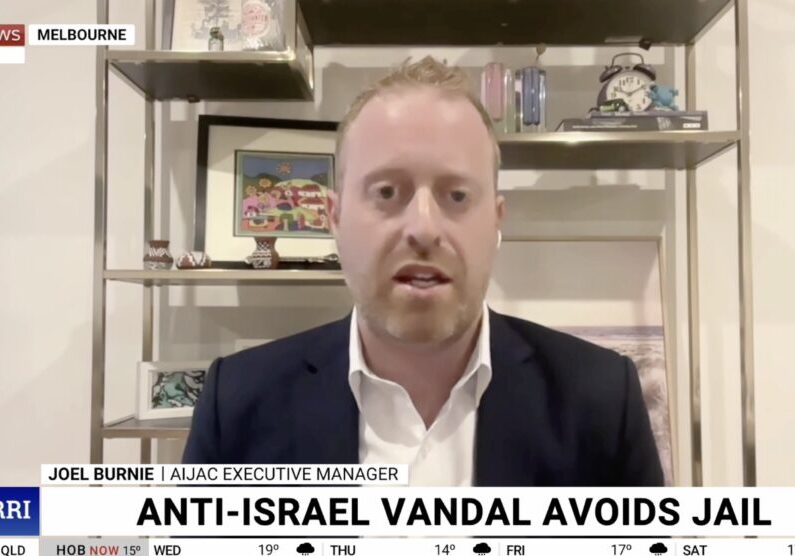
Sentencing for antisemitic vandalism “manifestly inadequate”: Joel Burnie on Sky News

“Bittersweet” aftermath of hostage release deal: Joel Burnie on Sky News
